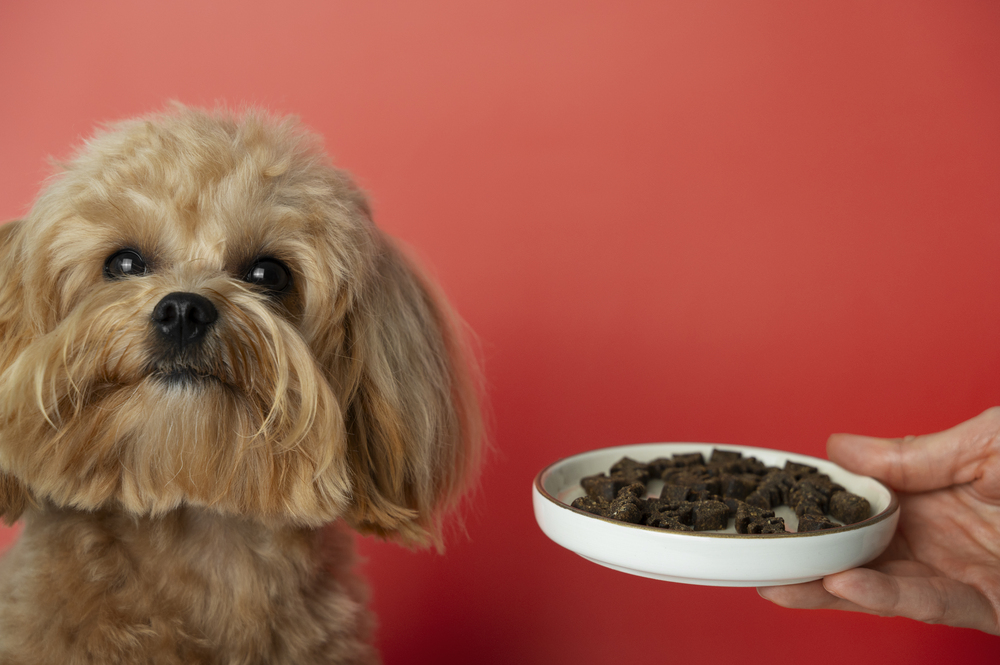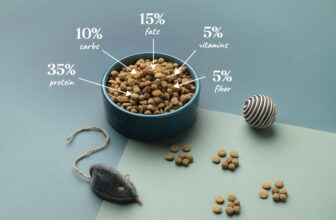
Choosing the right pet food for your pet involves much more than simply picking up a bag or can that looks appealing. Your pet’s nutritional needs change with age, size, breed, and lifestyle. Just as you wouldn’t feed a puppy the same food as an adult dog, the diet of a small breed cat is different from that of a large breed. In this article, we’ll explore the key factors to consider when selecting the best food for your pet’s specific age and breed.
Understanding Age-Appropriate Diets
Your pet’s age significantly impacts their dietary requirements. From infancy to their golden years, nutritional needs evolve, requiring different levels of proteins, fats, vitamins, and minerals.
1. Puppies and Kittens (0–12 months)
The first year of a pet’s life is crucial for development. Puppies and kittens require high-protein diets rich in essential fatty acids, vitamins, and minerals to support rapid growth, bone development, and a strong immune system.
- Nutritional needs: High protein and fat content to support energy needs and muscle growth. DHA (a fatty acid) is essential for brain and vision development.
- Feeding tip: Look for formulas labeled as “growth” or “puppy/kitten food,” as they are designed with the high caloric and nutrient needs of young pets in mind. For larger breeds, such as Golden Retrievers or Maine Coons, consider specific large-breed puppy or kitten formulas to ensure their bones and joints develop properly without overloading on calories.
2. Adult Pets (1–7 years)
As your pet enters adulthood, their growth slows, and they require a maintenance diet rather than one focused on development. Their diet should support a healthy weight, sustained energy levels, and overall well-being.
- Nutritional needs: Moderate protein and fat levels for maintaining muscle mass and energy. Adult pets benefit from a balance of vitamins, fiber for digestion, and antioxidants for immune support.
- Feeding tip: Choose a balanced adult maintenance formula. Consider your pet’s lifestyle (active or sedentary) when selecting the calorie content. Large dog breeds, such as German Shepherds or Great Danes, may need joint support formulas with glucosamine, while small breed dogs like Chihuahuas might require smaller kibble for easy consumption.
3. Senior Pets (7+ years)
As pets age, their metabolism slows down, and they often become less active. Senior pets are more prone to health issues like joint pain, digestive problems, and obesity, so their diets must focus on maintaining health and supporting age-related conditions.
- Nutritional needs: Lower-calorie diets to prevent weight gain, with added joint supplements (glucosamine and chondroitin), antioxidants to support cognitive function, and fiber for improved digestion.
- Feeding tip: Look for senior formulas designed to support aging pets. These often have lower fat content, are easier to digest, and include ingredients that help prevent age-related diseases like arthritis or kidney issues.
Breed-Specific Dietary Needs
Breed-specific needs come down to size, genetic predispositions, and activity levels. Different breeds have different metabolisms, risk factors for certain health conditions, and energy demands, all of which affect the type of food that’s best for them.
1. Small Breed Dogs (e.g., Chihuahuas, Dachshunds)
Small breed dogs have faster metabolisms than larger dogs and often require more calories per pound of body weight. They also benefit from smaller kibble sizes that are easier to chew and digest.
- Nutritional needs: High-calorie food with easily digestible proteins and fats to keep up with their energy demands. Omega-3 and omega-6 fatty acids are beneficial for maintaining healthy skin and coats, which small breeds often struggle with.
- Feeding tip: Look for formulas specifically labeled for small breeds. These foods are designed to meet their high-energy needs and include kibble that’s easy for small mouths to handle.
2. Large Breed Dogs (e.g., Labradors, Great Danes)
Large breed dogs grow rapidly in their first year, and their diet needs to be carefully balanced to avoid putting too much strain on their developing joints. As adults, they’re prone to obesity, joint issues, and heart problems.
- Nutritional needs: Controlled levels of calcium and phosphorus for bone health, and joint-supporting ingredients like glucosamine and chondroitin to protect against arthritis. Moderate calorie content to prevent obesity is also important.
- Feeding tip: Large breed puppy formulas are essential for puppies, as they support slow and steady growth, reducing the risk of skeletal issues. As adults, large breeds benefit from weight control formulas and foods that offer joint support.
3. Cats: Size and Breed-Specific Needs
Though size doesn’t vary dramatically across cat breeds like it does for dogs, certain cat breeds have unique nutritional needs based on their genetic makeup or predispositions.
- Large Breeds (e.g., Maine Coons): These cats are prone to heart issues such as hypertrophic cardiomyopathy, so feeding them a diet rich in taurine (an essential amino acid) is critical for heart health. Their larger size also means they benefit from food that supports joint health.
- Active Breeds (e.g., Bengals): Cats with high energy levels require diets rich in protein and fat to fuel their active lifestyles. These cats can benefit from high-protein, grain-free diets that mimic a natural, carnivorous diet.
- Indoor Breeds (e.g., Ragdolls): Indoor cats tend to be less active, so their food should be lower in calories to prevent weight gain. They also benefit from fiber-rich foods to help with hairball control.
4. Birds: Size and Species-Specific Diets
Birds have unique dietary requirements based on their species. A parrot’s nutritional needs differ significantly from a canary’s or a finch’s.
- Small Birds (e.g., Canaries, Finches): These birds require a diet rich in seeds, fruits, and vegetables to provide the essential vitamins they need, particularly vitamin A.
- Parrots and Larger Birds: Larger birds like parrots need a varied diet that includes pellets, seeds, fresh fruits, and vegetables. They also require a high level of vitamins and minerals to maintain their vibrant feathers and strong beaks.
- Feeding tip: Make sure to include variety in your bird’s diet to avoid deficiencies. Pellets should make up the majority of a bird’s diet, with fruits and vegetables as supplements. Always avoid giving birds foods high in fat and salt.
Special Considerations: Activity Level and Health Conditions
Beyond age and breed, your pet’s individual health conditions and activity levels play a role in selecting the right food.
- Active Pets (e.g., Working Dogs, Hunting Cats): Pets with higher activity levels need more calories and protein to fuel their energy. Look for performance or high-energy formulas that meet the needs of working pets.
- Overweight Pets: Obesity is a common issue among pets, and choosing a lower-calorie, high-fiber food can help them lose weight while keeping them full.
- Pets with Allergies: Pets prone to food allergies or intolerances may require hypoallergenic or limited-ingredient diets. This can be especially common in breeds like Bulldogs or Retrievers, who may develop sensitivities to grains or certain proteins.
Conclusion
Choosing the right pet food is essential for supporting your pet’s health throughout their life stages. Whether you’re feeding a puppy, kitten, or senior pet, or catering to the specific needs of large breeds, small breeds, or active animals, understanding your pet’s age and breed-specific requirements will help ensure they receive the nutrition they need to thrive.
Always consult with your veterinarian to ensure your pet’s food meets their unique health needs, and adjust their diet as they grow and age to provide optimal care.





